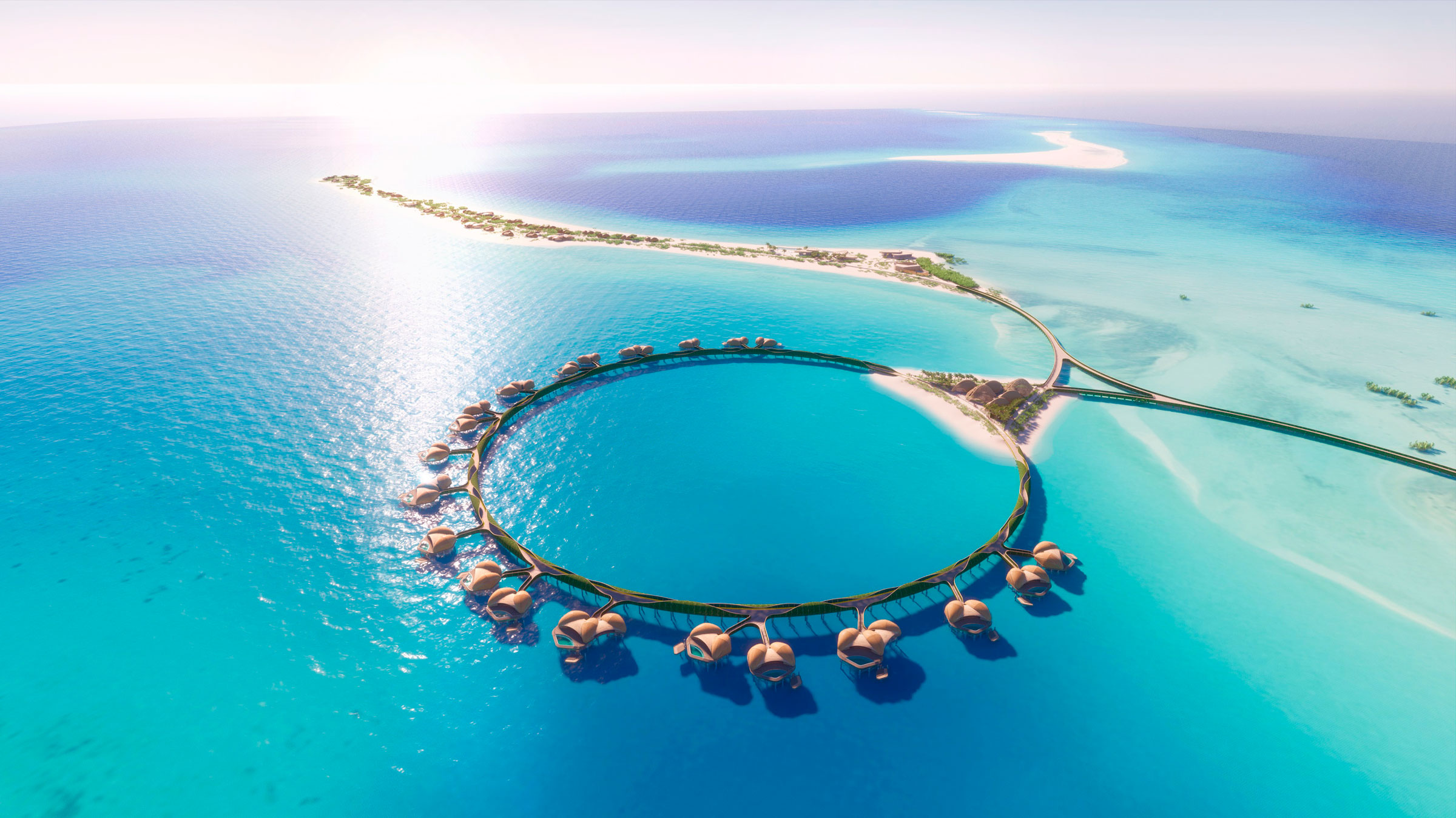Creating an entirely new destination from scratch isn’t easy, but having a vast swath of spectacular natural—and largely untouched—scenery is a good place to start. The Kingdom of Saudi Arabia is aiming to attract 100 million annual visitors by 2030 with a mix of newly developed giga-projects and ancient heritage sites, and 2023 will see the arrival of the first phase of The Red Sea, a destination that will allow just 1 million visitors per year.
Saudi Arabia’s bold move: branding a 10,800-sq.-mi. tranche, including coastal and desert areas, as “The Red Sea,” which aims to run 100% on renewable energy, and includes an initiative to make the destination the world’s largest certified Dark Sky Reserve.
Water-based activities along the 125-mile stretch of pristine coastline will include mangrove kayaking, sailing among The Red Sea’s 90 islands (only 22 of which will be developed), snorkeling largely unexplored waters, and diving the wreck of a 300-year-old wooden ship. On land, visitors can hike through granite hills, mountain bike across volcanic lava fields, and track migratory birds.
Three hotels will open this year. The 76-room inland Six Senses Southern Dunes resort pays homage to ancient Nabataean trade routes, alongside the brand’s usual focus on wellness. Spread over the two Ummahat Islands, and separated by the deep-water Blue Hole, the kingdom’s first overwater villas will open at the 90-room St. Regis Red Sea Resort and the 82-room Nujuma, a Ritz-Carlton Reserve.
The Red Sea International Airport opens to domestic flights in 2023 and international in 2024.
- How Donald Trump Won
- The Best Inventions of 2024
- Why Sleep Is the Key to Living Longer
- Robert Zemeckis Just Wants to Move You
- How to Break 8 Toxic Communication Habits
- Nicola Coughlan Bet on Herself—And Won
- Why Vinegar Is So Good for You
- Meet TIME's Newest Class of Next Generation Leaders
